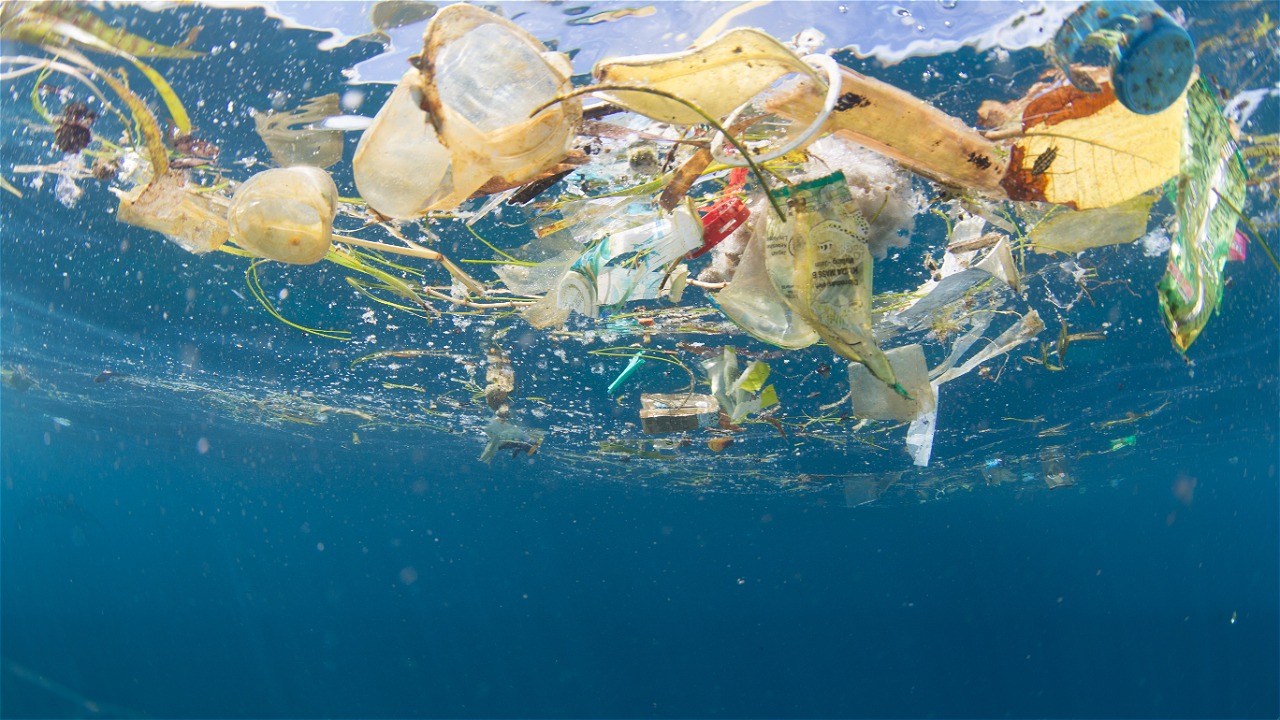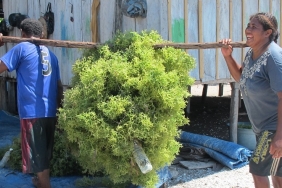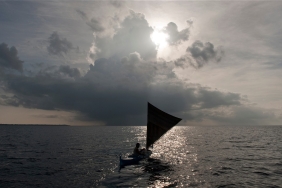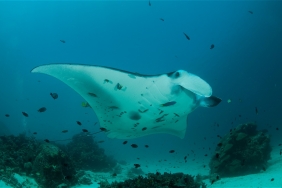KOMODO ISLAND: GARBAGE NOT CUL DE SAC
By Indarwati Aminuddin
Dahlan is lively, cheerful, helpful and takes the time to take care of the residents of Kampung Air. His house was once visited by Jusuf Kalla, former Vice President of the Republic of Indonesia during Sail Komodo 2013 and earned him a bonus of one large square umbrella which was plugged into the side of his house and became the center of community activities; Posyandu, fishermen meetings, political meetings and recitation.
As the head of RT 012, Dahlan's job is not far from listening to residents' complaints. Of the many problems, there was one that seemed to have no way out: garbage! "The government says to dispose of garbage in its place, but all the garbage bins are full," he said. He repeatedly attended meetings about garbage until he came to a decision, "bored". The bad decision was made by the residents to throw garbage in the sea.
Kampung Air, an interesting place to get a record of acculturation and fishing of Bugis-Makassar fishermen since 1950, whose population currently reaches 200 families. This village is one of the buffers of the Komodo National Park area in two senses at once opportunity and threat. Here, hundreds of fishermen actively operate in and around Komodo National Park, and struggle to avoid legal problems caused by overfishing, or environmentally unfriendly fishing. On the one hand, the residents of Kampung Air see a real opportunity for tourism, where culinary products, as well as arts and culture can be developed (despite having to fight against the garbage that has accumulated in front of Kampung Air). If sustainable tourism is developed and accompanied by waste reduction, then Kampung Air becomes a buffer zone that supports the management of the Komodo conservation area.
Decomposing Waste
The heavy burden for the residents of Kampung Air is to untangle the knot of garbage until Kampung Air is clean and attracts tourists to stop by. "We dreamed of earning extra income from tourist visits here in Komodo," Dahlan says. "But the garbage is a literal mess, clogging the gutters, piling up on the beach barrier, in front of houses, under trees and on the side of the main road."
According to him, the problem of waste starts from the process of disposal not in place (the average resident does not have a trash can), the process of transporting waste (in a year, count the fingers of transporting waste to the landfill). "So where do you want to dispose of it?" complained Dahlan. But Kampung Air's waste problem is a problem for everyone in West Manggarai, where the growth of visitors goes hand in hand with the increase in waste volume. Countless guests have become volunteers, collecting plastic waste and inviting other residents to participate. "They are fed up with seeing trash," Stefan said.
The results of a study by WWF-Indonesia and the Komodo National Park Center show that 90 percent of uncollected waste is plastic waste, which has the opportunity to increase income, can be recycled creatively, and is lying on a number of roads (see map). Each Labuan Bajo household produces at least one plastic bag measuring 40x50 cm or the equivalent of 4710 cm3 (2x 3.14) x 15 x 50).
If the total of 1294 households in Labuan Bajo is multiplied by 4710 cm3, Labuan Bajo residents produce 6,094,740 cm3 of waste per day. The buffer zone and areas within the Komodo National Park also produce as much waste: 1,577,850 cm3 (Papagarang Island), 1,931,100 cm3 (Komodo Island), 1,818,060 cm3 (Pasir Panjang Island), and 942,000 cm3 (Kampung Air).
Marsel Sani, a staff of the Environment Agency of West Manggarai Regency said, "the ability of the cleaning staff alone is 9 meters3 per one haul," he explained. This is accompanied by a lack of supporting facilities, 3 garbage trucks do not operate every day, and a 500 M2 20-year-old landfill that can no longer accommodate garbage.
The result is predictable, the explosion of garbage occurs everywhere roads, markets, office buildings, hotels, restaurants and certainly in Kampung Air. "Awareness of managing waste must go hand in hand with supporting facilities for waste management," said Marsel.
A number of meetings were held by WWF-Indonesia with the parties in West Manggarai, both the Government, non-governmental organizations, communities and waste business managers. WWF's work priorities are divided into four components, namely (1) Support for waste management based on the hierarchy of disposal, recycling, reduction, (2) support for the waste business chain, (3) support for waste management regulations, (4) support for raising awareness of waste management and reduction. The target groups of these four components are businesses, governments and communities.
In the meeting between the community of Kampung Air and WWF-Indonesia, the initial strategy that was built was to make waste as a joint movement with the aim that Kampung Air could become one of the plus-value community-based tourism sites. WWF then bridges residents with collectors who buy plastic waste. The next stage is to tie the community with tourism while encouraging consistent implementation of waste management regulations. "We see the opportunity for tourism but at the same time see the threat caused by this waste. So even though it looks difficult, it doesn't mean there is no way out," Dahlan said. Waste is not kuldesak.





